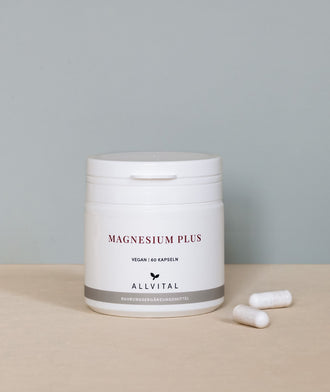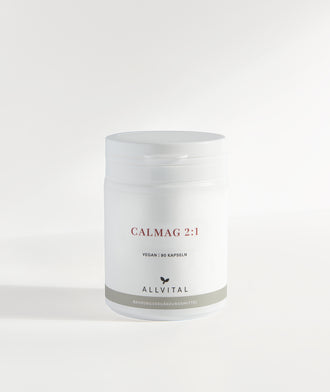
Strong teeth, healthy gums: The micronutrients your mouth needs
Healthy teeth are no coincidence – they need more than just a toothbrush and dental floss. Discover how micronutrients support the health of your entire oral cavity.
Why micronutrients are essential for dental health
Healthy teeth and strong gums are not just a matter of proper oral hygiene – they begin from within. Teeth are made of living tissue that relies on a continuous supply of nutrients. What we eat (or don’t eat) each day directly influences the structure, resilience, and regenerative capacity of our teeth and the surrounding tissues.
Structure of a healthy tooth
To understand why specific micronutrients are so important, it’s helpful to take a quick look at the anatomy of a tooth. A tooth is composed of several layers, each with its own function and nutrient requirements:
- Enamel: The outermost layer of the tooth and the hardest substance in the human body. It protects the tooth from mechanical wear, acids, and bacteria. Enamel is primarily composed of hydroxyapatite, a compound made of calcium and phosphate.
- Dentin: Located beneath the enamel, dentin makes up the majority of the tooth. It is less hard but more elastic than enamel and contains microscopic tubules that lead to the pulp. Dentin is sensitive and responds to heat, cold, and pressure. It consists of a collagen fiber matrix embedded with hydroxyapatite.
- Pulp: The innermost part of the tooth contains connective tissue, nerves, and blood vessels. It supplies nutrients to the tooth from the inside and is essential for its vitality.
A tooth does not function in isolation – it is anchored in the periodontium (supporting tooth structure) which fixes the tooth in the alveolus (tooth socket) of the jawbone. This complex system includes:
- the gums (gingiva) as the first line of defense,
- the periodontal ligament (desmodont) with collagen fibers (Sharpey’s fibers),
- the cementum as the outer layer of the root,
- and the alveolar bone, which supports the tooth.
These structures work together to provide stability, absorb mechanical forces, and supply the tooth with nutrients and blood flow – and they rely on optimal nutrient intake just as much as the tooth itself.
Key micronutrients for healthy teeth and gums
Teeth and gums require a carefully balanced network of micronutrients. Some act as building blocks, others reduce inflammation or promote regeneration. Here are the most important nutrients for optimal oral health:
Calcium – The foundation for strong teeth and bones
Calcium is the most abundant mineral in enamel, dentin, and the jawbone. Without adequate calcium, a stable tooth structure is impossible. It is especially important for bone regeneration after extractions or surgeries.
Recommended product: CalMag 2:1 – a premium calcium and magnesium supplement in the optimal 2:1 ratio. It supports healthy bones and teeth, muscle function, and energy metabolism.
Vitamin D3 & K2 – For calcium absorption and utilization
Vitamin D3 and K2 are a powerful duo and should be taken together. Vitamin D3 promotes calcium absorption in the intestines, while vitamin K2 ensures calcium is deposited in the bones. Together, they stimulate osteoblasts (bone-forming cells) and inhibit osteoclasts (bone-degrading cells). Vitamin D3 also supports immune function.
Recommended product: Vitamin D3 + K2 – combines both vitamins in a base of coconut and olive oil for optimal absorption.
Magnesium – Enzyme activator in bone metabolism
Magnesium is essential for activating vitamin D and acts as a cofactor in over 300 enzymatic reactions, many of which are crucial for bone formation and tissue regeneration. A deficiency can impair calcium utilization.
Recommended product: In addition to CalMag 2:1, Magnesium Plus offers 100 mg of magnesium per capsule, combined with vitamin B6 to enhance absorption.
Phosphorus – Building material for dentin and enamel
Alongside calcium, the mineral phosphorus is another key component of our teeth. The body requires a balanced ratio of calcium and phosphorus for structural stability. Phosphorus is readily available in food, so deficiencies are rare. Rich sources include meat, fish, eggs, dairy, whole grains, and nuts.
Vitamin C – For healthy gums and collagen fibers
Vitamin C is vital for collagen production – a key component of gum tissue and the tooth's supporting structures. It also strengthens local immunity and acts as an antioxidant against inflammation in the oral cavity. Severe deficiency causes scurvy, leading to gum bleeding and tooth loss.
Recommended product: Vitamin C Complex – combines natural vitamin C sources with L-lysine for better absorption and green tea extract for added antioxidant effects.
Zinc – Immunity booster and wound healing aid
Zinc has anti-inflammatory and antibacterial effects and supports wound healing. It helps regenerate mucosal tissue and lowers the risk of infections and gum disease.
Recommended product: Zinc – combines three organic forms of zinc for optimal bioavailability.
Omega-3 fatty acids – Healthy cell membranes
Omega-3 fatty acids are essential components of cell membranes and serve a variety of functions throughout the body. They also play an important role in oral health, particularly in supporting healthy gums.
Recommended product: DHA plus EPA – contains essential omega-3 fatty acids from high-quality algae oil. Omega-3+6+9 contains alpha-linolenic acid and vitamin E, among other nutrients.
Micronutrients as a foundation for successful dental procedures
Any surgical dental procedure places significant stress on the body. It must break down damaged tissue, generate new cells and blood vessels, and rebuild bone – all of which require not just energy, but especially bioavailable micronutrients.
In biological dentistry, the guiding principle is: “The body can only heal what it has the building blocks for.” Without targeted supplementation of vitamins, minerals, and trace elements, impaired wound and bone healing may occur – with long-term consequences for systemic health.
It is therefore wise to begin taking the recommended micronutrients even before a procedure and continue at a higher dosage for several weeks to months afterward to support recovery.
Cavitations: When the jawbone doesn’t heal
One of the most common yet overlooked complications after tooth extractions is the development of cavitations, also known as:
- FDOJ (Fatty Degenerative Osteolysis of the Jaw)
- or NICO (Neuralgia-Inducing Cavitational Osteonecrosis).
These are chronic inflammatory areas in the jawbone where healing after an extraction has been incomplete. Instead of regenerating into healthy bone tissue, the site becomes filled with soft, fatty, poorly vascularized material.
This degenerated tissue serves as a chronic source of inflammation in the body. Toxins and pathogens can accumulate within the cavitations. Inflammatory messengers and toxins are continuously released from these areas into the bloodstream, spreading throughout the entire body.
Often, there are no symptoms in the mouth itself, but a range of systemic symptoms may appear – many of which are not initially linked to the jaw, allowing cavitations to remain undiagnosed for years or decades.
Possible symptoms include:
- chronic fatigue and exhaustion
- diffuse pain, migraines, joint discomfort
- hormonal imbalances, thyroid issues
- autoimmune activity, food intolerances
- skin problems (acne, rashes)
- chronic digestive issues
Cavitations are especially common after early wisdom tooth extractions, particularly in young individuals when the bone is not properly supported before or after surgery. Similar toxic processes can also arise from root canal-treated teeth.
Diagnosis & treatment
Cavitations are often not visible on conventional X-rays. A reliable diagnosis requires a 3D CBCT scan (cone beam computed tomography) of the jaw.
Treatment involves surgical removal of the affected tissue, along with antimicrobial strategies (e.g., laser and ozone therapy) and regenerative approaches such as PRF (platelet-rich fibrin). A holistic support plan with micronutrients and detoxification measures is strongly recommended to enhance healing and reduce relapse risk.
Conclusion: Think holistically when it comes to oral health
The health of our teeth is closely linked to our overall micronutrient status. Whether it's the stability of tooth enamel, the resilience of the gums, or healing after a procedure – micronutrients play a central role at every stage.
At the same time, the health of our oral cavity has a significant impact on the entire body. Oral diseases are not limited to the mouth in their effects.







